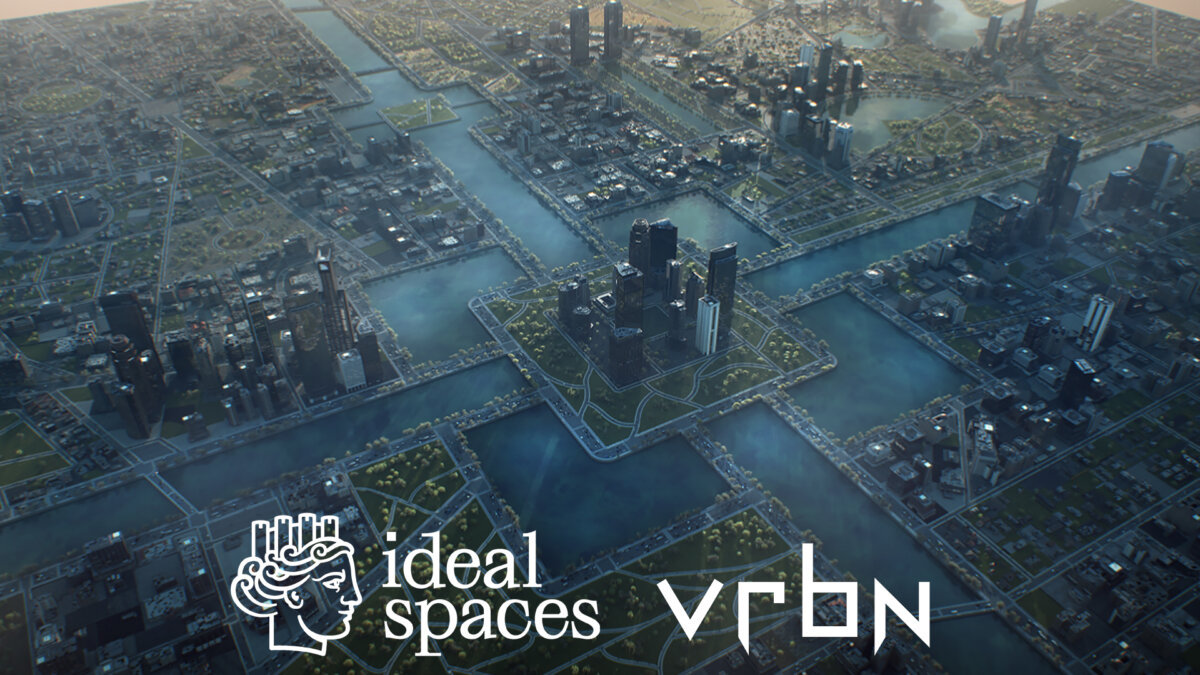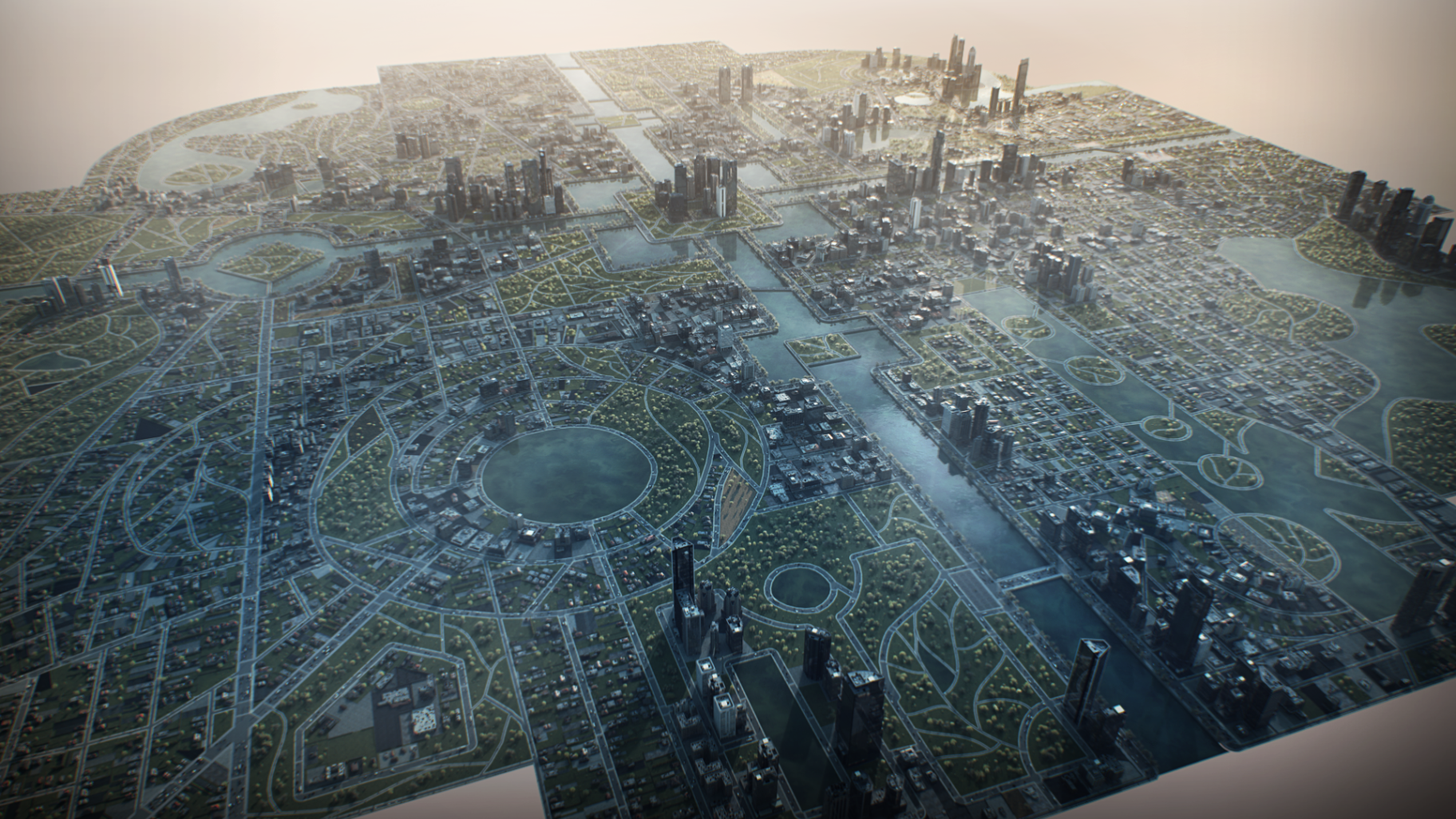Utopian Disruption Concept
Anca Badut + Matthias Bühler (vrbn), Ulrich Gehmann ( Ideal Spaces)
Joining their creative forces again, Ideal Spaces Working Group (ISWG) and vrbn are facing the challenge of reframing an old architectural and philosophical theme under a new approach: what would an ideal city look like in a contemporary context?

Under the leadership of Ulrich Gehmann (ISWG) and Anca Badut (vrbn), the “Utopian Disruption” project proposes an ever-growing dynamic ideal city, adapted to the contemporary needs of communities, whilst embedding symbolic meanings and concepts characteristic of Western culture. The environment in question utilizes realistic contemporary architecture, in contrast to the common understanding of an ideal space being generated with rather “ideal” luxurious architectural designs. Further on, we will investigate the way in which conceptual paradoxes’ tension has dictated the final shape of Utopian Disruption.
First and foremost, Utopian Disruption is an assumed fundamental dichotomy between nature and culture. The paradox between culture, ergo architecture, and nature is one of the main concepts representing the genesis of the project. Architecture, even as it may be faced with the challenges or concepts of biomimicry, is artificial, an artifact in literal sense, namely a product of art and technique designed by humans.The very concept of ISWG and vrbn’s “ideal city” aims to reconcile this tension by expressing it symbolically, at the same time being designed in a contemporary way, to fit an architectural and urban zeitgeist. This is conveyed in the cities’ general layout, constructed from three main domains: The center (first domain) of the city is a strictly symmetrical area, the core domain of culture; surrounded by a second domain, where the architectural design becomes more organic – the transition is smooth, from “culture” to “nature”. The third domain is where the landscape takes over, with architectural expressions coming even closer to the organicity of green areas (parks, forests and their intersection with waterbodies). The third domain also embodies a possibility of the city to grow, leaving the proposed design as a ”puzzle” piece and inviting the viewer to mentally propose the transition to a new simulacrum of another city. A boundary is no sharp line but a transition zone “where something different begins”.

Therefore, the general shape of the environment doesn’t only emphasize the dialogue between cultura and natura, but it is also somewhat mimicking the shape of a jigsaw puzzle piece, to communicate to the viewer the possibility of belonging into a larger story.
“The open invitation to imagine a continuation of the city’s persona”, Anca Badut explains, “is one of the ideas that fascinated me the most. We put a lot of time debating philosophical concepts, discussing abstract sketches for composition and form-finding, and the entire process made me feel like writing a book with an open ending.”
The city of Utopian Disruption embodies a central area designed in a classicistic manner, that further spreads out via four canals emanating from it. The structure of the first domain of the city, taken from a 16th century-irrigation system of a Moghul Park in India, resembles a wind rose, a symbol for the cosmos. The four canals can be expanded any time, allowing the city to grow alongside them. The organic growth is resembled by organic forms, circles, curves, irregular shapes, which are dispersed in the domains two and three, following the canals and the Greek concept of a boundary. The basic connecting element is water. It pours out in the center, the core area of culture, and then continues until the “wild” environment is reached, where the city ends.

